SHOW ME THE MONEY!
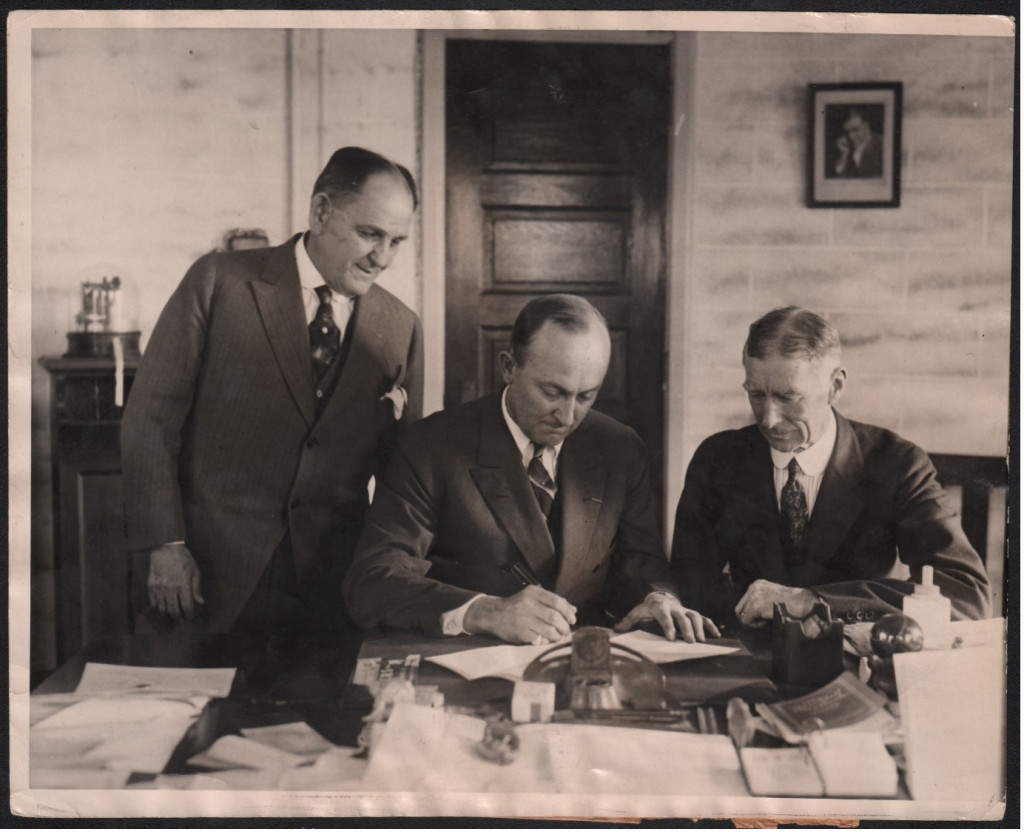 The Classic (career-rated) player pool has undergone another usage-driven salary adjustment.
The Classic (career-rated) player pool has undergone another usage-driven salary adjustment.
Ty Cobb (pictured above signing his contract to play for Connie Mack and the Philadelphia A’s in 1927) received the biggest salary increase in dollar terms: $2,245,000, from $22,858,000 to $25,103,000. SP Frank Owen received the biggest raise in percentage terms: 50.09%, from $1,945,000 to $3,897,000.
Mickey Mantle took the biggest salary hit: a whopping $3,060,000, from $29,133,000 to $26,073,000. SP Aaron Harang took the biggest percentage cut (minimum salary $3,000,000): 18.31%, from $3,592,000 to $3,036,000.
Overall, 1,936 players received a salary increase, 2,975 took a salary cut and 198 remain unchanged; there are 304 players making the minimum; and the total value of the player pool remains unchanged at $19,888,790,000.
SOME RECORD-SETTING PERFORMANCES
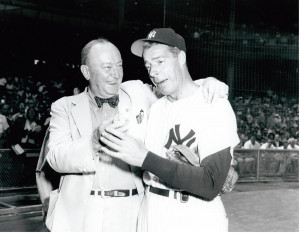 We asked customers to tell us about their most unusual and/or interesting and/or outstanding game, series or season, player or team performance. Here are a few for the record books:
We asked customers to tell us about their most unusual and/or interesting and/or outstanding game, series or season, player or team performance. Here are a few for the record books:
• Rocky Colavito with 14 RBI in one game (major league record: 12 (Jim Bottomley 1924 and Mark Whiten 1993))
• Ty Cobb with A 57-game hitting streak, the first ever to surpass Joe DiMaggio’s record 56-game streak in a Standard League
• ’98 Sammy Sosa topping the all-time single-season HR and RBI records (81 HR (major league record: Barry Bonds 73), 195 RBI (major league record: Hack Wilson 191))
• Jelly Gardner, Barry Bonds, Mark Teixeira and Ryan Rayburn slug back-to-back-to-back-to-back HR to start a game (there have been four consecutive HR 11 times in major league history, but never to start a game)
CUSTOM LEAGUES KINGS
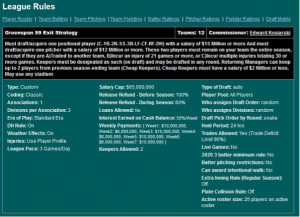 If you want to play in a tried-and-true format and create your team right now, standard leagues (Classic and SSG) are open to the public 24/7. But if you want to try something different, Custom Leagues – created by customers – are there in abundance.
If you want to play in a tried-and-true format and create your team right now, standard leagues (Classic and SSG) are open to the public 24/7. But if you want to try something different, Custom Leagues – created by customers – are there in abundance.
There are franchise leagues, progression leagues, captains leagues, high and low salary cap leagues, “rags to riches” leagues, alphabet leagues, place of birth leagues … the possibilities are limited only by your imagination.
Diamond Mind Online would not be the same if the Community did not include some of the most clever and prolific creators of Custom Leagues. We’ll be featuring one of these in this space each month.
This month we’re visiting with Ed Kosiarski, whose Greenspan series of leagues is about to begin its 60th season.
Q: Tell us something about yourself: age, occupation, marital status, where you live, and interests (apart from DMO, of course).
A: My late father was the athlete (HS QB) of the family, shook hands with Babe Ruth, and caddied for Joe Medwick. I’ve resided in NJ all my life. Currently semi-retired (due to health and family obligations), I was mostly associated with the cosmetics industry, and taught at elementary school a few years. I have a BA in mathematics, have been a widower for 3 years, and have a 17-year-old autistic son (high end, a challenge in more ways than one). My fondness of baseball simulation has as much to do with probability and statistics as baseball.
Q: When did you start playing DMO and how did it first come to your attention?
A: My affinity for DMO began with Topps and Post Cereal cards, followed by APBA, and STATS BB simulation. I’ve been with Diamond Mind since its inception.
Q: The Greenspan leagues just completed their 59th season. Tell us something about the format and other custom leagues in which you participate.
A: I’ve been with the Greenspan, Blind Draw and Memorial League for many seasons. Greenspan is a high interest (50%) low cap league that is like two seasons in one. Your draft picks are mostly low-salaried players and you accumulate a rapidly building bank account in order to purchase premium players later in the season.
The Memorial League is about a great bunch of guys who have played many seasons together, with various themes (limited player pools based on a player’s attributes (years played in real MLB, players who played for certain teams, players with certain stats, etc)).
The most intriguing is the Blind Draw (Ed’s Trading Post) league, where a team is randomly assigned 28 players within a salary cap (a lesson in spread sheet management) and has a limited amount of player transactions between team and player pool – but can make an unlimited number of trades throughout the season (this league has probably had more trades than all the other leagues combined).
Q: Can you offer a few tips for success for those who’ve not played in a Greenspan-type league?
A: A team could be in danger if it falls too far behind early in the season or waits too long to acquire the best players mid-season.
THE TIPPING POINT
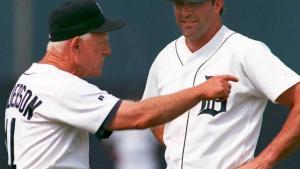 Each month we’ll offer a few tips in this space that may come in handy for the beginner as well as the experienced team owner.
Each month we’ll offer a few tips in this space that may come in handy for the beginner as well as the experienced team owner.
Dvd (dvdavins) Avins posted an observation on the message boards that was worth exploring further: ”I usually lead the league or come very close in extra runs, beyond my RC. Don’t go just by the slash lines.” Here are some of the comments in response, which may help you gain an edge in run production too.
Jmgoyette I’ve given this a decent amount of thought for years, at least anecdotally as it has related to different leagues I’ve been in. An interesting thing that I’ve noticed is that the gap between RS and RC is considerably lower in more recent eras of play than in the standard era and earlier eras. The biggest differences then, I believe, stem from fielding errors and baserunning events. There are considerably fewer errors in more modern eras, and considerably more strikeouts (i.e. fewer outs created on fielding plays, hence fewer batted ball events that can advance runners), and these are factors that aren’t really weighed within the RC formula.
TylerEnsor I think it’s pretty well accepted that runs scored usually exceeds RC, and that this difference is larger in older eras than more modern eras. That’s likely due to errors. However, if we’re trying to figure out why some teams exceed RC to a greater extent than other teams, then we can’t look to errors as these should affect all teams relatively equally.
I suspect the run rating plays a big role here. A lot of owners use something like 2.5 runs per band of run rating. If your nine starters all have Ex run, then, that’s 45 runs unaccounted for by the RC formula. Now, very few teams are going to have all Ex runners, but I’ve found that, without even trying, most of my teams have primarily Vg and Ex runners. Runs from run rating generally cost less than runs from other offensive categories (particularly power). Someone like Dvd probably capitalizes on this better than most, leading to his observation.
Dvdavins Run ratings would give me an advantage over some teams, but I seem to do better even than teams with similar such ratings. I wish I could be sure what the rest comes from, but there are too many moving parts and I don’t know which ones are important.
Years ago, I stopped fiddling with the Baserunning instruction. I guessed (and still hold) that it’s a risk tolerance setting, rather than a frequency setting, so the sim will take care of running slower runners less frequently and I don’t need to exaggerate that. Everyone’s set to 3. If I played in Coors or went with a very offensively oriented team, I might set it to 4.
My version of RC, which is based on the 2002 version but with situational hitting removed and CS and GDP penalized in B as well as A, may help. It increases the value of singles and reduces the value of HR and 2B. It also includes a slight penalty for K, which probably gives me an extra couple of ROE over the course of a season.
I carefully set the H&R instruction for each player, increasing if they GDP more and decreasing if they K more or have a higher ISO.


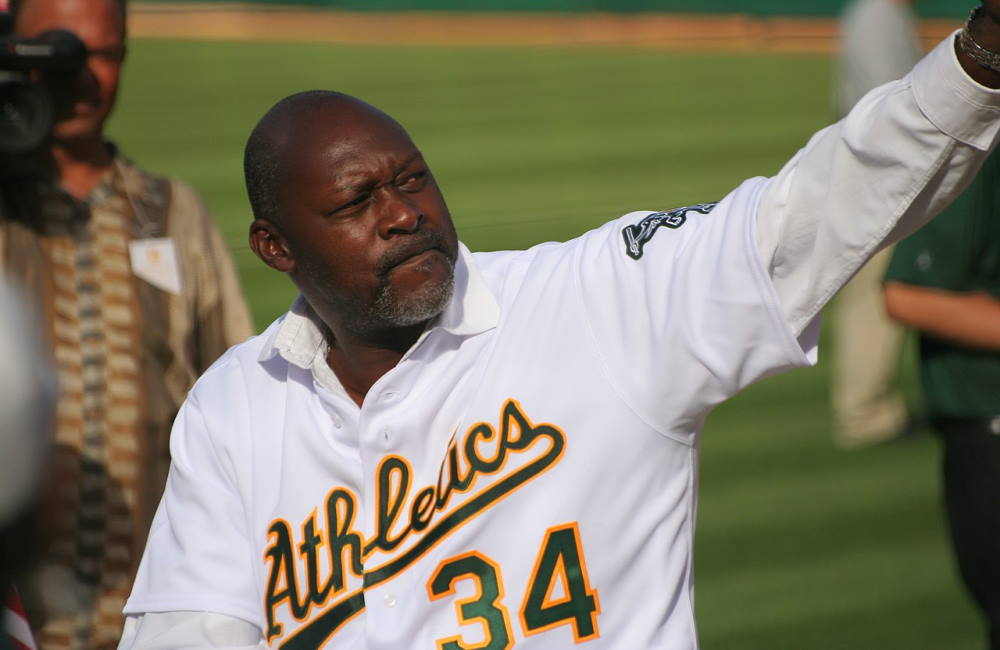


Leave A Comment